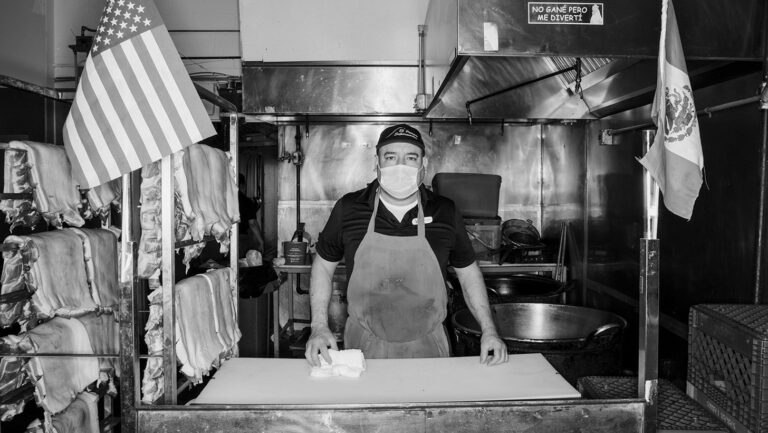Although he's exhibited his art around the world, the National Hispanic Cultural Center is currently presenting Abeyta's first traveling, retrospective show. Cuentos y Encuentros will close on June 6, so there's still a few days left to catch this exhibit by one of our state's best homegrown artists.
At first glance, the paintings that make up the bulk of Cuentos y Encuentros might seem like the anachronistic work of some long dead Spanish Colonial painter. This is because Abeyta intentionally melds aesthetic elements culled from the great traditions of European art with New World mythologies and references to modern pop culture. His large-scale paintings often present traditional renderings of Catholic saints and Madonnas in the same frame with Mexican wrestlers, low riders, Aztec gods and even aliens.
It's this disarming mixture of new and old, conservative and experimental that provides the foundational imagery of Abeyta's paintings. In “Rosario de Besos,” for example, Abeyta creates an elaborately baroque depiction of a crowned Madonna garbed in an ornate blue robe. In the top left corner, above the word “verguenza” (shame), is the image of two struggling wrestlers. In the top right corner, above the word “orgullo” (pride), is a bright red low rider rearing back on its back wheels. Such pieces are characteristic of the enigmatic attraction of Abeyta's utterly original work.
In other paintings, Abeyta injects some sly comedy into his highly ornate art. “Indios” depicts the Aztec god, Quetzocoatl, and the East Indian god, Shiva, captured in side by side portraits. This painting references Columbus' famous mistaken belief that he had landed in the East Indies rather than the Americas. The lavishly constructed composition contains a flowing gilded frame within a frame. Detailed red, white and blue flowers float like stars in the dark outer abyss. Many of Abeyta's paintings include antiquated script. In this case, the words “R. Martin Abeyta, Pintor de Cosas Raros” (painter of rare things) are engraved into the golden frame.
It's a declaration with which no one can argue. In “El Niño Perdido,” Abeyta depicts an infant Jesus with the face of an elderly man, “milagros” such as the artist's wedding photo, a prayer card from JFK's funeral and a business card for “House of Hydraulics” pinned to the baptismal gown. In “El Enpeloto,” Abeyta tells a cuento, using comic-like frames, which he first heard from his aunt Toni, about a man who crept around the neighborhood naked peeping through windows. In “El Quinto Sol,” in a section of the exhibit with a warning sign for parents and teachers, Abeyta retells the Aztec creation myth, depicting Quetzalcoatl piercing his penis with a long golden pin and squirting the blood on a pile of sacred bones.
This odd and alluring work is unlike anything you've ever scene. The odd familiarity of Abeyta's juxtaposed iconography makes these paintings seem like artifacts from some parallel universe. I highly recommend stopping by the center this weekend before the exhibit comes down.
Cuentos y Encuentros, an exhibit featuring paintings by Ray Martín Abeyta, runs through June 6 at the National Hispanic Cultural Center. 246-2261.








